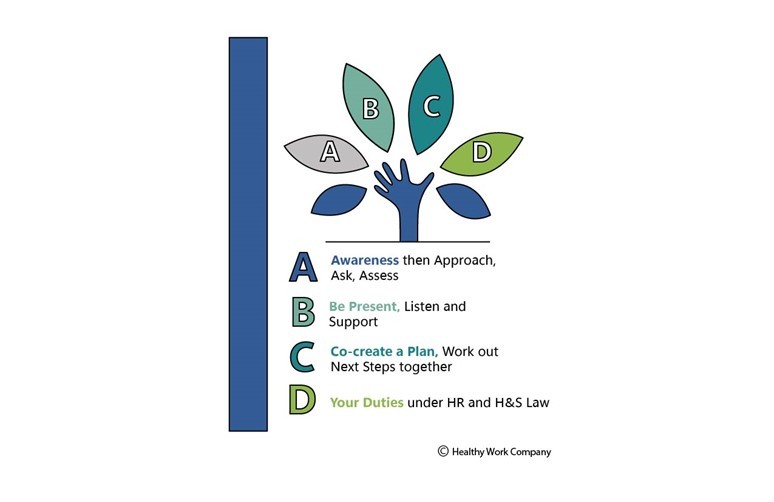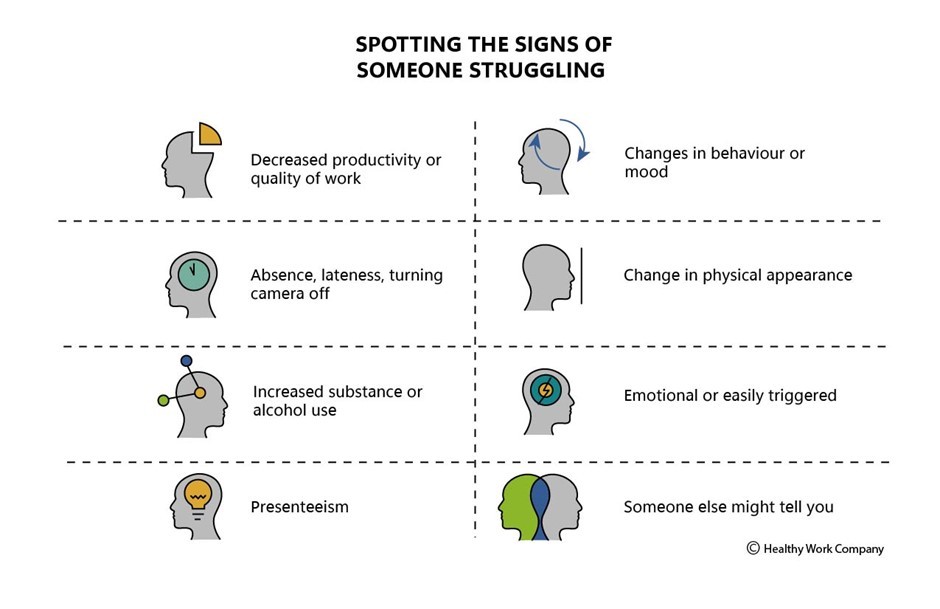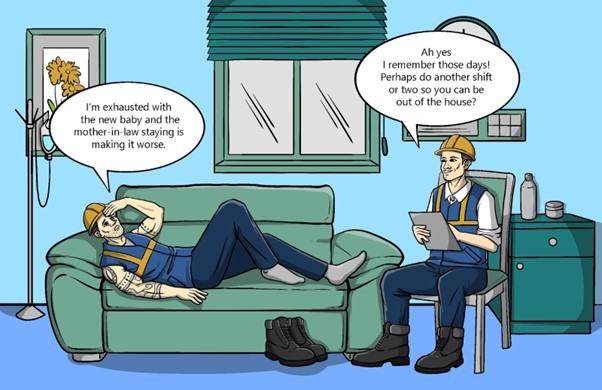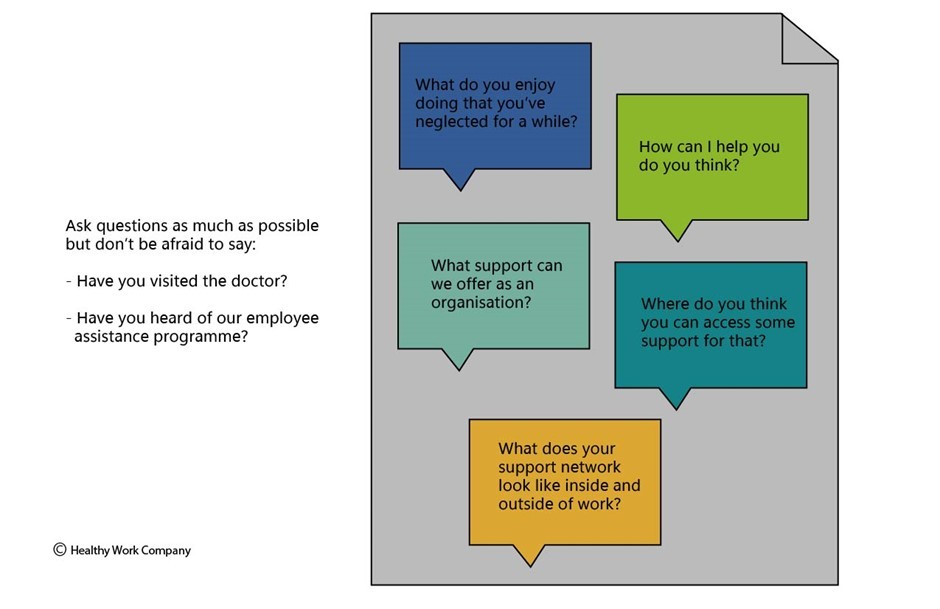In managing wellbeing at work, people managers have legal duties to comply with (which it is worth noting, or not shared by mental health first aiders).
The duties are under health and safety regulations – a duty of care to ensure that the organisation manages stress appropriately, and under the Equality Act 2010 which contains laws against Disability Discrimination. Health and mental health issues may be considered disabilities (under certain circumstances).
Under the Health and Safety at Work act, consider using an organisational stress risk assessment. It may also be a good idea to consider an Individual stress risk assessment when someone is returning from work after ill health. Mind’s Wellness Action plans form a similar role.
Golden rules for people managers to ensure you stay within your duties as a people manager:
Prevention first
Check in regularly with your team, ensuring that they have the time and resources to do their job appropriately. When issues do arise, ensure you start conversations early and agree how you can support the individual as an organisation and ensure that you are clear on review dates.
Considerations on confidentiality
Opening up about any health concerns can be tough, especially as mental health worries can be very personal. You should reassure the employee that you will not share anything they tell you, unless there’s a good reason to. Note that you may indeed need to discuss what the individual raises with your HR business partner, occupational health provider or your own manager, and you should be clear about this in your conversation. Note this differs entirely on advice to mental health first aiders who should not discuss the conversation unless there is a risk to life.
Documenting and follow up
On completing each conversation, write a short-written summary for the individual about what you discussed and what was agreed, and email it to them. This creates clarity and shows the conversation took place. Ensure you follow up.
Reasonable adjustments
If someone says they are struggling with a mental ill health issue which may end up being considered a disability under the Equality Act or equivalent, you should demonstrate that you have considered reasonable adjustments and where these are not practicable for you as an organisation, that you have communicated as to why they are not practicable. In parts of Europe, a company doctor will recommend these adjustments. These adjustments should be time limited and reviewed.
Use internal resources
Involve HR and their specialists and follow company procedures.
Sickness absence
When someone is off sick, stay in contact and always do a return-to-work interview.
People managers have a crucial role in ensuring wellbeing of their team. By fulfilling their managerial duties within the legal framework, managers can confidently navigate these conversations while protecting the interests of both employees and the organisation.







